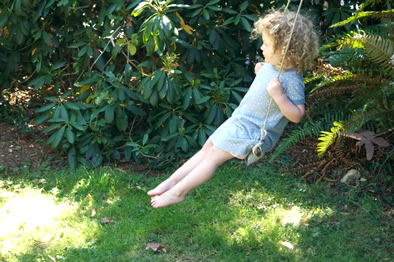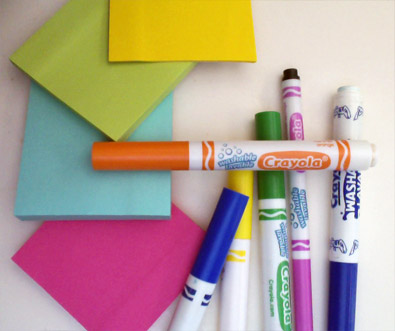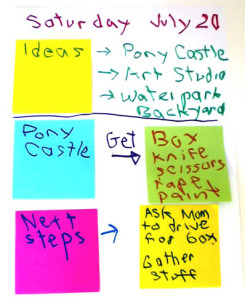So how does a lazy summer afternoon provide opportunities to teach problem solving skills?
Often, children are so used to being constantly stimulated by screens and structured schedules, that they feel uneasy when they have to entertain themselves.
Many children have had little opportunity to practice this type of problem solving skill.
Summer provides breathing space, a slower pace, and hopefully time to observe, contemplate and learn new skills.

I’m bored…
As strange as it seems, a great time to teach problem solving skills is when your kids complain about being bored. The next time they tell you they’re bored, don’t feel like you need to be responsible for coming up with great activities, instead use it as an opportunity to teach creative problem solving.
A key is to remember is that taking on the responsibility to problem solve is a skill, and it takes practice. A quick web search will reveal that many adults have difficulties in this area too.
Children are natural born problem solvers but may have had few opportunities to practice this skill when it comes to finding things to do. A little guidance can help them along.
Many parents get sucked into doing all the planning for their children and end up taking on the responsibility of keeping the children occupied all through a break from school. Asking the following questions may help your kids learn some important problem solving skills.
1. Questions to Ask
What are you feeling?
Saying I’m bored is often a habit and the child may just want to connect with you for 5 minutes, they may be tired and need to rest with a book or they may be struggling with not having screen stimulation. They may need help to focus on how to find something to do.
Encouraging your children to stop saying, I’m bored, and having them tell you the emotions they are feeling, helps them zero in on the real problem.
What’s the problem?
When I’m bored means I don’t know what to do, entertain me now, that is the golden moment to teach problem solving skills.
What are 4 choices for something you can to do right now?
This question helps children to visualize what they actually have available. The temptation for parents is to rush in and list all the possibilities.
If the ideas your child has requires planning ahead, the question below can be helpful.
What can you do right now to make sure that what you are wanting will happen this afternoon (or next week, etc. )?
Avoid rushing in to come up with ideas and solutions and have the children draw or print their ideas on sticky notes. Provide materials for easy list making.
Don’t allow anyone to stifle a child’s creativity by being critical or cynical or by saying things like, that’s a dumb idea or that will never happen. If the kids seem stumped, try questions like,
- What would happen if . . . ?
- You enjoyed …. What do you think you could try next?
- What choices do you have right now?
Guide the children to choose activities that are open-ended and not about achieving exact outcomes. This way if all the materials are not available or if the skills necessary are not developed, the children will be happy with their efforts. For instance, “designing and making a castle with 4 turrets” may end in frustration but “designing and making a castle” may end up with moats, windows, bridges and even a turret or two!
Teaching Children to Create Change

Children (and adults!!) often need help figuring out the steps necessary to make things happen. A few guiding questions and using sticky notes and markers can help them see the process.
- What materials would you need to gather?
- Will you need money to buy anything? (and maybe how can you earn this money?)
- Where is there space for you to do this, make this,…?
2. Shift the responsibility…
Now is the time to ask, “In what ways can you make …happen?” Ideas are great but without action, nothing happens.
If children are used to you stepping in and taking over at this point, they’ll expect you to do it again. Instead, teach them the skill of breaking tasks down into small steps. Use the sticky notes or a chart to help them see the process.

Hold back the urge to fix or make things easy for your child and let him/her have opportunities to figure out the planning and to discover what works and does not work. Providing new materials may generate other ideas for things to do and a momentum will begin to happen.
3. Solving the problem of being frustrated…
Just like adults, children get frustrated when something is not working the way they think it should. For instance, if a child is attempting to make a cardboard castle and the card won’t stick with the glue stick he/she is using, rather than solving the problem with words, put out other materials like duct or masking tape, and trust him/her to figure it out. If the activity begins to lose its appeal, a few well placed questions can get it going again.
- “What would happen if you…?”
- “What else can you make with these materials?”
- “How many other ways can you use this?”
- “I wonder how …”
4. Show kids that you are confident in their abilities…
Create an atmosphere that lets children know that you have confidence in their abilities to come up with creative problem solving ideas, that they are capable of figuring things out for themselves, and as they do, be enthusiastic about their efforts and help them take pride in their own abilities.
Saying “Wow! You figured that out all by yourself!” reinforces their sense of accomplishment.
If you describe what the child actually did to solve a problem (for example, “It was a good idea to use that long block to make a bridge over that river.”) rather than simply saying “good job,” you’re not only telling them you value what they did, you’re encouraging them to think about the specific steps they took to work things out.